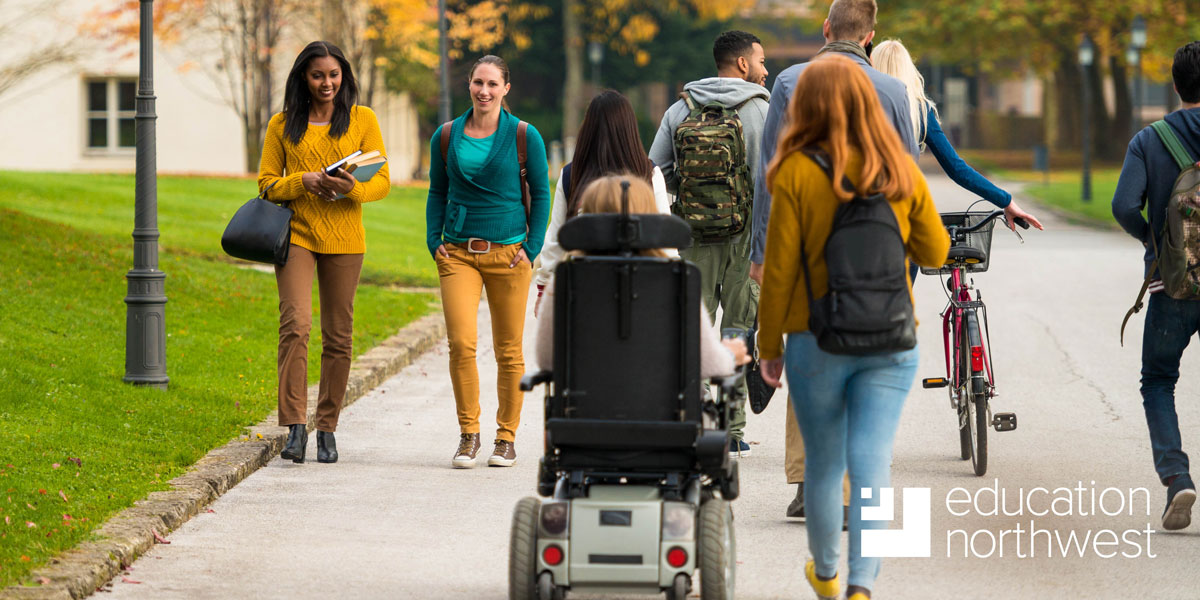Supporting Rural Oregon Students in High School and Beyond

Two-thirds of Oregon’s public high schools are in rural areas and 42 percent of Oregon grade 9–12 students attend a rural high school. In our collaboration with The Ford Family Foundation, Supporting Rural Students in Oregon in High School and Beyond: A Study of College Enrollment, Persistence, Transfer, and Completion Outcomes, we looked at the challenges rural high school students in Oregon face and how education stakeholders can support them for postsecondary success.
Our study finds that rural students had lower rates of college enrollment, persistence, and completion than their nonrural peers—and the enrollment gap is growing. This means that, compared to nonrural students, rural students are less likely to enroll in college in the first place, more likely to drop out or otherwise leave college, and less likely to graduate.
Figure 1: College enrollment, persistence, transfer, and completion rates for Oregon's rural and nonrural public high school graduates

Source: Authors’ analysis of Oregon Department of Education and National Student Clearinghouse data.
These lower rates of college enrollment and other outcomes for rural students, as compared to nonrural students, can be found across nearly every segment of the rural student population, particularly males, and includes nearly all racial and ethnic groups.
Figure 2: College enrollment rates among 2018/19 high school graduates, ordered from highest to lowest

Source: Authors’ analysis of Oregon Department of Education and National Student Clearinghouse data.
How Oregon Education Stakeholders Can Help
Findings from this report show that observed gaps in college enrollment, persistence, and completion would likely shrink if rural students attended the same high schools as their nonrural peers. However, at present, rural students often have different high school opportunities than their nonrural peers. To address these gaps, college access for rural students must continue to be a priority in Oregon. Education stakeholders should acknowledge the structural barriers facing many rural students—such as higher poverty rates and fewer resources among rural communities and schools—and invest in the necessary supports to help rural students realize their college aspirations.
Broaden College Aspirations While Supporting Community College Completion Efforts
The study finds that, for rural students, geographic distance from their high school to college does not influence persistence or completion. However, the type of institution where rural and nonrural students enroll does influence gaps in persistence and completion—enrollment in more selective institutions is positively linked to student outcomes. Therefore, high schools could support rural students’ increased awareness of more selective colleges and universities during their college planning and financial aid and scholarship opportunities that may make attending these institutions more feasible.
In addition to expanding college aspirations for rural students, Oregon stakeholders should continue to support efforts to improve community college completion rates. Rural students are more likely to attend Oregon community colleges than any other type of college.
Invest in College Preparatory Opportunities
This study demonstrates the importance of college preparatory opportunities, such as accelerated learning, for rural student success. Among rural students, 65 percent of those who took college coursework during high school went on to enroll in college, while only 36 percent of those who did not engage in such learning enrolled. While 80 percent of Oregon high schools offer some form of accelerated learning, such as dual credit, direct enrollment in a college or university, Advanced Placement courses, or International Baccalaureate programs, rural schools tend to offer fewer of these opportunities than nonrural schools do.
Participation in accelerated learning in Oregon is positively related to college enrollment, persistence, transfer, and completion (Hodara & Pierson, 2018). Specifically, from 2014 to 2020, Oregon’s Regional Promise program has expanded accelerated learning and has promoted a college-going culture for low-income and rural students. Education stakeholders in Oregon should continue to invest resources in these opportunities for rural schools to close the gap with nonrural schools and increase equity in the state’s education system.
By taking these steps, Oregon can ensure more equitable outcomes for rural students and put the state on a better path to meet college completion goals.



